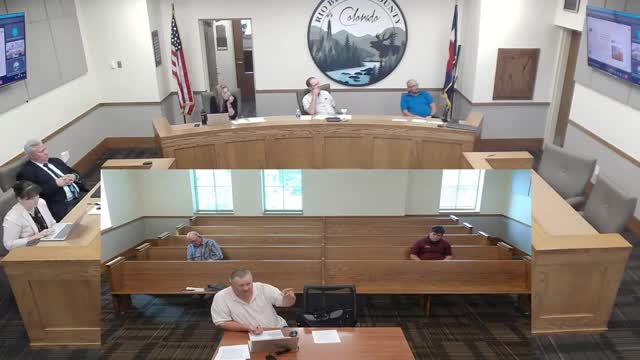Community divided over river management and endangered species plan
August 09, 2024 | Rio Blanco County, Colorado
This article was created by AI summarizing key points discussed. AI makes mistakes, so for full details and context, please refer to the video of the full meeting. Please report any errors so we can fix them. Report an error »

In a recent government meeting, discussions centered on the intersection of economic development, water management, and environmental protection in the context of the White River. Participants highlighted the importance of balancing tourism and outdoor recreation with the need to protect endangered fish species under the Endangered Species Act (ESA).
A key point raised was the state's in-stream flow program, which appropriates and sequesters water but is not designed for ESA compliance. This has raised concerns among local stakeholders about the potential impact on both water users and fish recovery efforts. The conversation revealed a divide, with some entities, including the state and an environmental organization, opposing a proposed Biological Opinion (PBO) aimed at protecting fish in the White River.
Despite this opposition, local agencies and community members expressed a strong desire to move forward with economic revitalization efforts, particularly in promoting recreation and tourism. The meeting underscored the community's cautious approach to endangered species protection while simultaneously advocating for economic growth.
Participants voiced frustration over the current recovery program's reliance on methods that disrupt local recreational activities, such as electrofishing, which can temporarily shut down fishing opportunities for campers and anglers. This has raised questions about the effectiveness of current strategies and the need for a more balanced approach that considers both ecological and economic factors.
As local initiatives to improve river access and enhance recreational facilities continue, the future of the White River management plan remains uncertain, with stakeholders calling for a reevaluation of strategies that align environmental protection with community interests. The meeting concluded with a call for collaboration among local, state, and federal agencies to ensure that both economic development and environmental stewardship can coexist.
A key point raised was the state's in-stream flow program, which appropriates and sequesters water but is not designed for ESA compliance. This has raised concerns among local stakeholders about the potential impact on both water users and fish recovery efforts. The conversation revealed a divide, with some entities, including the state and an environmental organization, opposing a proposed Biological Opinion (PBO) aimed at protecting fish in the White River.
Despite this opposition, local agencies and community members expressed a strong desire to move forward with economic revitalization efforts, particularly in promoting recreation and tourism. The meeting underscored the community's cautious approach to endangered species protection while simultaneously advocating for economic growth.
Participants voiced frustration over the current recovery program's reliance on methods that disrupt local recreational activities, such as electrofishing, which can temporarily shut down fishing opportunities for campers and anglers. This has raised questions about the effectiveness of current strategies and the need for a more balanced approach that considers both ecological and economic factors.
As local initiatives to improve river access and enhance recreational facilities continue, the future of the White River management plan remains uncertain, with stakeholders calling for a reevaluation of strategies that align environmental protection with community interests. The meeting concluded with a call for collaboration among local, state, and federal agencies to ensure that both economic development and environmental stewardship can coexist.
View full meeting
This article is based on a recent meeting—watch the full video and explore the complete transcript for deeper insights into the discussion.
View full meeting
